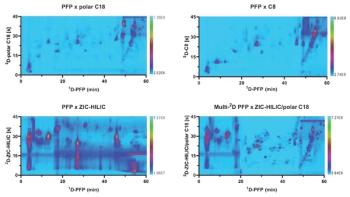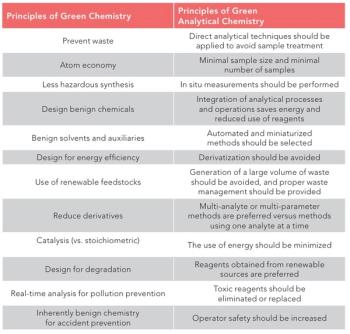
- The Application Notebook-06-01-2011
- Volume 0
- Issue 0
Self-Aggregation of Gelatin
Gelatin is the denatured form of collagen, the main component of skin, bone, and connective tissues of animals. Its special properties are a sharp sol-gel transition, low sol viscosity, and high effectiveness as a protective colloid.
Gelatin is the denatured form of collagen, the main component of skin, bone, and connective tissues of animals. Its special properties are a sharp sol-gel transition, low sol viscosity, and high effectiveness as a protective colloid.
For properties of aqueous mixtures of gelatin with other biopolymers, the character of aggregates of α-chains is important: The entropy of mixing is reduced when gelatin chains are limited in their mobility by aggregation.
Figure 1: Concentration as a function of molar mass.
SEC-MALS was used to study the aggregation behavior of gelatin solutions as a function temperature without using denaturing agents, such as urea or SDS. In addition to the usual concentration detection by refractive index, optical rotation detection was applied to detect any changes in the degree of helicity of the gelatin chains.
After soaking overnight at 4 °C, gelatin was heated for 30 min at 80 °C and subsequently kept for 60 min at the temperature of the measurement (50–80 °C). The eluent was a 0.01-M potassium phosphate buffer of pH 6.7 with 0.125 M LiNO3. The column set consisted of a precolumn PWH, 6000 PW, and 3000PW (all of TSK).
Figure 2: Another sample’s concentration as a function of molar mass.
Figures 1 and 2 show a reversible change of the bimodal molar mass distribution of two different porcine gelatins at temperatures between 50 °C and 80 °C (number in legend corresponds to temperature), well above the gelatin temperature of about 30 °C.
The effect of temperature on the molar mass distribution suggests the existence of a monomer-dimer equilibrium between gelatin chains (the shoulder corresponding to the monomer was 90–100 kDa, and the one corresponding to the dimer was approximately 200 kDa). The results explain the different behavior of these gelatins in mixtures with other biopolymers.
The ratio of the refractive index and the optical rotation was constant for MM <~400 kDa and is independent of temperature. No involvement of helix formation could be detected.
Wyatt Technology Corporation
6300 Hollister Avenue, Santa Barbara, CA 93117
tel. (805) 681-9009, fax (805) 681-0123
E-mail:
Articles in this issue
over 14 years ago
Hydroxyethylstarches (HES)over 14 years ago
Aggregated Singletons for Automated Purification WorkflowNewsletter
Join the global community of analytical scientists who trust LCGC for insights on the latest techniques, trends, and expert solutions in chromatography.




